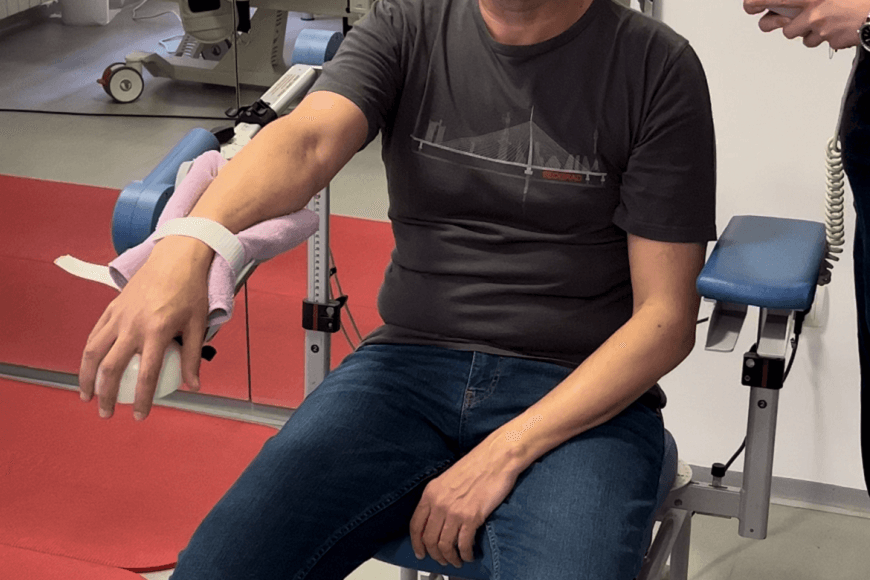Working Time
- Mon-Thu 08:00 - 20:00
Friday 07:00 - 22:00
Saturday 08:00 - 18:00
Contact Info
-
Phone: 011 240 40 46
011 407 82 31
064 258 89 85 - info@ffb.rs
Ask the Experts
Luxatio - dislocation of the acromioclavicular joint

The most common problems of the acroclavicular joint are arthritis, fracture and dislocation, or dislocation. It occurs more often in athletes, exercisers, especially weightlifters. Treatment can be conservative (physical therapy, drugs) and operative.
An AC joint dislocation is a tear of the AC ligaments with or without a tear of the coracoclavicular ligaments. It occurs as a result of a direct fall on the shoulder.
ANATOMY OF THE ACROCLAVICULAR JOINT
The acroclavicular joint consists of the scapula and the clavicle. Between the articular surfaces there is cartilage, similar to the meniscus, which slowly disappears after the age of 40. The joint is minimally mobile, sliding movements are performed in it, while rotational movements are minimal. AC joint stabilizers are:
- joint capsule
- acroclavicular ligaments (anterior posterior superior and inferior)
- coracoclavicular ligaments (CC trapezoid and conoid ligaments), which control movements in the vertical plane and are responsible for lower and upper stability.
Dynamic joint stabilizers are:
- anterior part of the deltoid muscle
- trapezius muscle
DIAGNOSTICS
Diagnosis is based on clinical examination and radiographs. Diagnostic ultrasound enables insight into the condition of the ligaments and surrounding muscle attachments, as well as determining the degree of dislocation of the AC joint. In certain cases, he can perform a CT scan and an MRI magnet of the shoulder.
CLINICAL PICTURE
Pain is the dominant symptom and is felt in the area above the AC joint and can spread to the trapezius muscle.
On palpation, there is painful sensitivity in the area of the AC joint, instability of the AC joint and the phenomenon of a hole - when pressing on the collarbone, it returns to the level of the joint, and then lengthens again.
CLASSIFICATION OF DISLOCATIONS OF THE AC JOINT
And the guy. - no instability, present stretching of ligaments
Type II - dislocation with rupture of the AC ligaments while CC are preserved.
Type III - dislocation, rupture of both AC and CC ligaments
IV type - clavicle dislocated posteriorly
V type- and trapezoidal fascia tear
VI type - very rare type, dislocation of the clavicle downwards
TREATMENT OF DISLOCATION Ac JOINT
Treatment can be non-operative or operative. Non-operative treatment is for type I and type II and consists in wearing a blanket to relax the muscles around the shoulder girdle. Physical therapy is the method of choice in these cases, which aims to regenerate the affected region and restore mobility and reduce pain. It aims to return the patient to daily activities after 6 weeks.
Recovery after AC joint dislocation surgery aims to improve the circulation of the shoulder joint in the first phase of recovery with the help of physical procedures as well as passive exercises to reflect the mobility of the shoulder. Our office has a ROBOT for the shoulder, which allows us to maintain the mobility of the ligaments of that apparatus in a precise manner and under the supervision of a doctor. This phase lasts for 6 weeks, after which active exercises are introduced to strengthen the entire shoulder region. Our experienced therapists carry out kinesitherapy strictly individually.
Get in touch if you have any questions. We are at your disposal.






